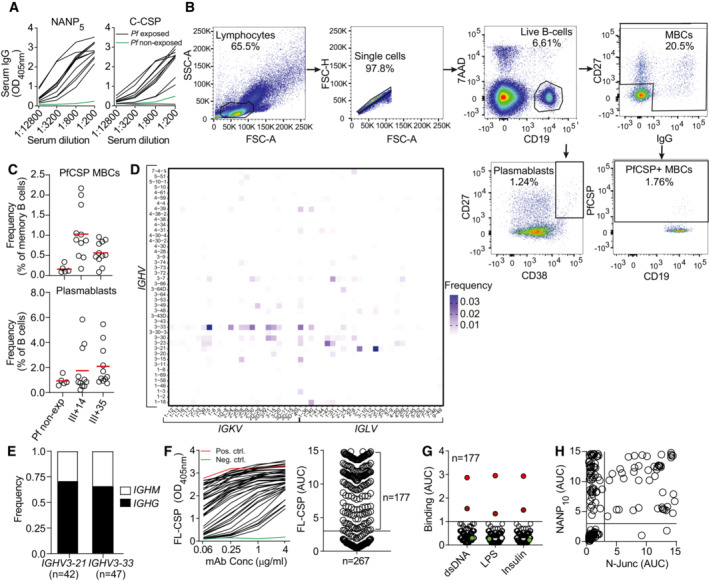Figure EV1. Immunization with radiation‐attenuated Plasmodium falciparum sporozoites (PfSPZ Vac) induces strong antibody responses against the PfCSP C terminus.

- Representative ELISA curves of serum IgG reactivity against PfCSP‐derived NANP5 peptide and C‐CSP domain.
- Flow‐cytometric single‐cell isolation strategy for PfCSP‐reactive memory B cells and plasmablasts from a representative immunized donor.
- Frequency of PfCSP‐reactive memory B cells (upper panel) and plasmablasts (lower panel) in PBMCs of immunized donors at the indicated time points (III + 14 and III + 35) and non‐immunized donors (Pf non‐exp).
- Paired Ig heavy and light chain V gene usage in PfCSP‐reactive memory B cells (n = 1,172).
- Isotype distribution of IGHV3‐21‐ and IGHV3‐33‐encoded mAbs.
- ELISA binding strength of FL‐CSP‐reactive mAbs to N‐Junc peptide vs NANP10.
Data information: Data in (C) represent one biological measurement obtained prior to cell sorting. Data in (F and H) indicate means from three independent technical replicates. Data in (G) are representative of two independent technical replicates.
